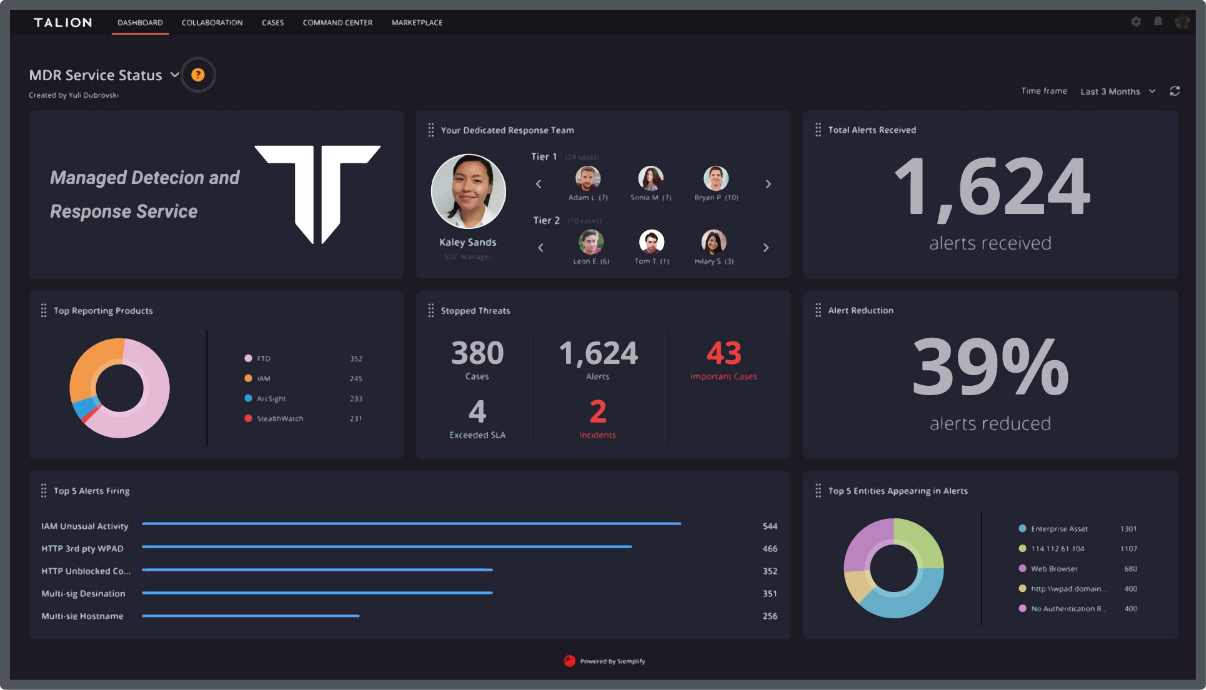Chief Information Security Officers (CISOs) and other cybersecurity leaders are facing a complex landscape of challenges with increasingly sophisticated cyber gangs and hacking risks that require advanced monitoring and response solutions. Here are some of the biggest problems that need to be addressed with advanced MDR and Managed SIEM services:
1. Advanced Persistent Threats (APTs) and Sophisticated Cyberattacks: APTs are becoming more sophisticated, often bypassing traditional security measures. CISOs need solutions that can detect and mitigate these threats early and effectively, using advanced analytics, AI, and machine learning techniques.
2. Cloud Security: With the increasing adoption of cloud services, CISOs face the challenge of securing cloud environments, including Infrastructure-as-a-Service (IaaS), Platform-as-a-Service (PaaS), and Software-as-a-Service (SaaS). They need comprehensive visibility and control over their cloud assets to prevent unauthorized access and data breaches.
3. Ransomware and Malware Attacks: Ransomware attacks continue to evolve, with attackers using more sophisticated methods to encrypt data and demand ransom. CISOs require advanced anti-ransomware tools and strategies, including regular backups, incident response plans, and employee education to mitigate the impact of these attacks.
4. Insider Threats: Insider threats, whether intentional or accidental, remain a significant concern. CISOs need to implement robust monitoring systems that can detect unusual behaviors and access patterns, along with establishing strict access controls and user activity logs.
5. Compliance and Regulatory Requirements: Staying compliant with a growing number of cybersecurity regulations and standards (such as GDPR, CCPA, HIPAA) is a constant challenge. CISOs need solutions that not only ensure compliance but also streamline the process of managing and reporting compliance status.
6. Supply Chain Security: As organizations increasingly rely on third-party vendors and suppliers, the risk of supply chain attacks grows. CISOs need to extend their cybersecurity monitoring and response capabilities to cover third-party risks, including conducting regular security assessments and audits of their partners.
7. IoT and Endpoint Security: The proliferation of Internet of Things (IoT) devices and remote work has expanded the attack surface. CISOs need to secure a wide range of endpoints, from mobile devices to IoT sensors, requiring endpoint detection and response (EDR) solutions and zero-trust security models.
8. Skill Shortages and Resource Constraints: The cybersecurity skills gap remains a significant issue, leaving many organizations understaffed in critical security roles. CISOs need solutions that can augment their team’s capabilities, such as managed detection and response (MDR) services, and tools that automate routine tasks to free up staff for more strategic work.
9. Data Privacy: With increasing concerns about data privacy, CISOs need to ensure that their cybersecurity strategies also protect personal and sensitive information, requiring robust data governance and privacy-enhancing technologies.
10. Quantum Threats: As quantum computing advances, the potential threat to current encryption standards grows. CISOs need to begin preparing for post-quantum cryptography to ensure long-term data protection.
Addressing these challenges requires a multifaceted approach, including adopting next-generation technologies, revising strategies, and fostering a culture of security awareness throughout the organization. To learn more about how Talion can help you adopt this approach while saving money and resources, book a consultation today.

Call us directly and we’ll put you in touch with the most relevant cyber expert.
Not currently free to call? Give us a brief description of what you’re looking for by filling out our form and we’ll email you as soon as we can.
